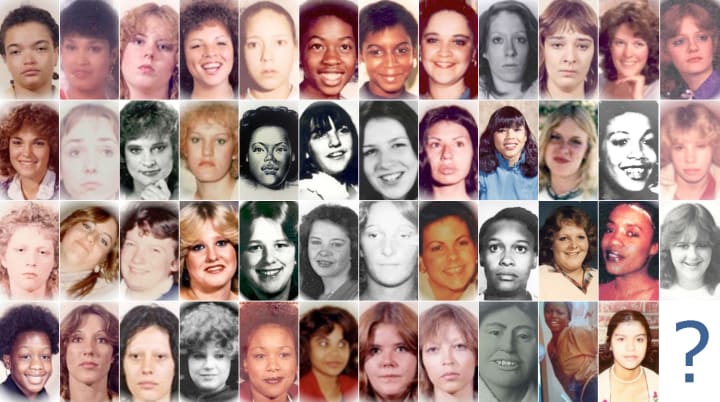The Green River Killer: The Chilling History of Gary Ridgway and His Reign of Terror
Overview of the Green River Killer

Background and History of the Green River Killer
The Green River Killer, as he came to be known, was a notorious serial murderer named Gary Ridgway. His reign of terror lasted for almost 20 years, significantly impacting the Pacific Northwest community and instilling fear in the hearts of its residents. The majority of his heinous crimes occurred between 1982 and 1984. during which the community was gripped with uncertainty and terror as the body count rose. This period of rampant crime and fear led to a heightened sense of communal solidarity as everyone sought to protect themselves and their neighbors from the unseen predator lurking in their midst.
Ridgway quickly became one of the most feared figures in American criminal history, his moniker alone enough to send shivers down the spine. His merciless killing spree, coupled with the mystery surrounding his identity, turned the Green River Killer into a symbol of fear and dread that gripped the entire region. As the number of victims grew, so did the public’s anxiety and desperation for justice. It was a dark chapter in the region’s history, forever altering the community and the criminal justice system.
Profile of Gary Ridgway
Gary Ridgway dubbed the Green River Killer, had a troubled relationship with his mother, which many believe may have contributed to his violent tendencies and lack of empathy for his victims. His disturbing pattern of targeting vulnerable women, specifically prostitutes and runaways, was a chilling demonstration of his cold-blooded ruthlessness. In 2001, Ridgway was finally arrested and subsequently confessed to the murders, shockingly claiming to have killed as many as 80 women. His confession and the sheer magnitude of his crimes stunned the nation and sparked discussions on the psychological factors that may drive individuals to such extreme levels of criminal behavior.
Ridgway’s early life and psychological profile provide a grim insight into his transformation into the Green River Killer. Despite seeming ordinary and unassuming, Ridgway harbored a deep-seated hatred and disdain for women, particularly those he viewed as morally corrupt or weak. This twisted perception, formed in his early years, guided his choice of victims and his methodical, heartless execution of the murders. Even after his arrest and during his confession, Ridgway demonstrated a chilling lack of remorse for his actions, further emphasizing his detached and sociopathic nature.

Crimes and Victims
Ridgway’s victims were primarily young women who were involved in sex work or were runaways. Most of the bodies were discovered near the Green River in Washington. The victims’ vulnerability and the brutal nature of their deaths heightened public outrage and fear. Ridgway was eventually convicted for 48 separate murders. Later, an additional conviction was added, bringing the total number of convictions to 49 and solidifying his status as one of the most prolific serial killers in American history.
While Ridgway’s victims were primarily sex workers and runaways, no woman in the area felt safe during his reign of terror. The fear was not confined to a specific demographic; it spread across the community, affecting women of all walks of life. The sheer number of victims, the brutality of their murders, and the uncertainty surrounding the killer’s identity created an atmosphere of pervasive fear, affecting the community’s sense of safety and security. It was a distressing time, with every new body found intensifying the panic and desperation to apprehend the killer.
Overlooked Forensic Evidence
In a regrettable misstep, forensic evidence connecting Ridgway to the murders was overlooked in the 1980s. This failure represented a missed opportunity to apprehend the killer sooner. The lapse in recognizing the significance of the evidence has been a source of regret for many investigators and forensic scientists involved in the case. This oversight underscored the importance of thorough forensic examination in criminal investigations, especially in cases of such magnitude.
The overlooked evidence included vital clues that could have led to Ridgway’s capture much earlier. Forensic experts believe that a renowned trace evidence expert could have found these overlooked clues in the 1980s, but unfortunately, they were never called to the case. This mishap has left many investigators and forensic scientists appalled and regretful. The case serves as a stark reminder of the significance of meticulous attention to detail in forensic science, with the hope that such oversights can be avoided.
The Green River Task Force and Investigation
In response to the escalating series of murders, a dedicated task force was assembled within the King County Sheriff’s Office to track down the Green River Killer. This intensified the efforts to identify and capture the perpetrator. Despite being a suspect early on and even passing a polygraph test, Ridgway managed to evade capture for an extended period, prolonging the anguish of the victims’ families and the community at large.
The formation of the Green River Task Force represented a significant step towards apprehending the killer. Comprising experienced detectives and investigators, the task force was exclusively dedicated to solving the Green River murders. They painstakingly reviewed each case, looking for connections or patterns that could lead them to the killer. Their tireless efforts eventually paid off when DNA profiling linked Ridgway to the murders, leading to his arrest.
Arrest and Confession
Ridgway’s reign of terror came to an end in 2001 when a significant breakthrough in DNA profiling conclusively linked him to the murders, leading to his arrest. After his arrest, Ridgway made a shocking confession, admitting to the numerous murders he had committed. His admission and the sheer scale of his atrocities sent shockwaves through the nation. In 2003, Ridgway accepted a plea deal and was sentenced to 48 consecutive life sentences without the possibility of parole.
Following his arrest and during the court proceedings, Ridgway’s lack of remorse and the casual manner in which he recounted his crimes further horrified the public. His heinous acts and the resulting media attention also raised critical questions about the justice system’s ability to deal with such cases effectively. The plea deal accepted by Ridgway in 2003, which saved him from the death penalty in exchange for his cooperation, sparked debates about the appropriateness of such agreements in cases involving serial killers.
Impact on the Community and Criminal Justice System
The Green River Killer case left an indelible mark on the local community and the criminal justice system, underscoring the profound impact of unresolved cases and the critical need for meticulous investigation and forensic scrutiny in solving such heinous crimes. The series of murders and the ensuing investigation had a profound effect on the community and the law enforcement agencies involved. It led to significant changes in how serial killer investigations are conducted, with an increased emphasis on forensic evidence and DNA profiling.
In the aftermath of the case, law enforcement agencies, forensic scientists, and the community grappled with regret and disappointment over the missed opportunities to apprehend Ridgway sooner. The case highlighted the importance of thorough investigation, effective communication among different agencies, and the crucial role of forensic evidence in solving crimes. It also underscored the need to support the victims’ families and the community during such traumatic events.
Legacy and Cultural Impact
The chilling saga of the Green River Killer has become a part of popular culture, inspiring numerous documentaries, films, and books that have sought to unravel the complexities of the case and its enduring impact on society. The case has had a lasting influence, shaping popular perceptions of serial killers and prompting discussions about law enforcement responses to such crimes. Gary Ridgway’s name is now synonymous with one of the darkest chapters in American criminal history, serving as a haunting reminder of the devastation caused by unchecked malevolence.
The Green River Killer case has also highlighted the tragic vulnerability of marginalized populations. Ridgway’s victims were primarily sex workers and runaways, who, due to their marginalized status, were often overlooked by society. The case prompted a renewed focus on protecting vulnerable communities and raised awareness about the risks they face. It also served as a grim reminder of society’s responsibility to protect its most vulnerable members.
Want to read more about this case? Green River, Running Red: The Real Story of the Green River Killer — One of America’s Deadliest Serial Murderer
About the Creator
Matthew Jack
My 30-year law enforcement career fuels my interest in true crime writing. My writing extends my investigative mindset, offers comprehensive case overviews, and invites you, my readers, to engage in pursuing truth and resolution.






Comments
There are no comments for this story
Be the first to respond and start the conversation.